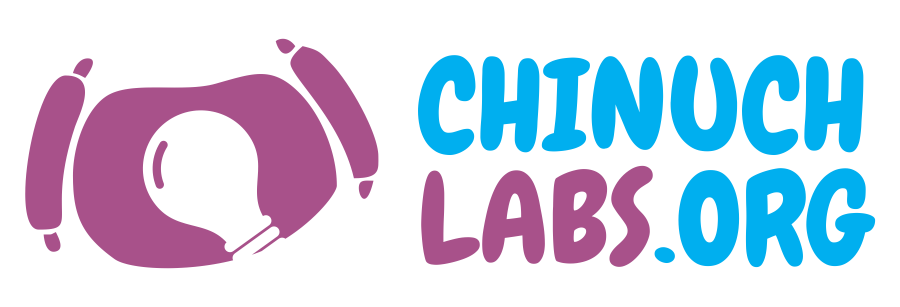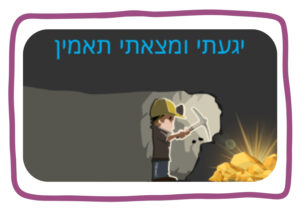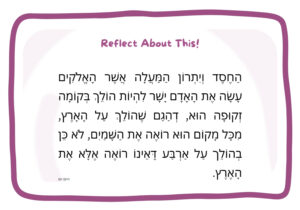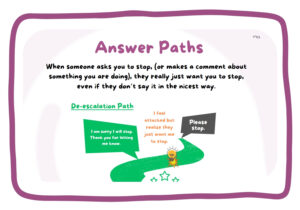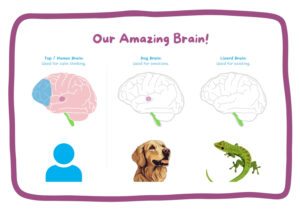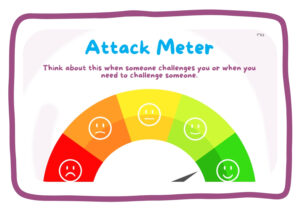Parents and teachers can effectively use this script and accompanying poster as a powerful tool for teaching children the crucial skill of emotional regulation. In this script, we explore the Lizard Brain, Dog Brain (Amygdala), and Top Brain (Prefrontal Cortex) to provide a kid-friendly understanding of how our minds work. By incorporating relatable examples and encouraging discussions, educators and parents can facilitate conversations around emotions, decision-making, and the unique abilities humans possess compared to other creatures.
The accompanying poster serves as a visual aid, reinforcing key concepts. To enhance the learning experience, interactive activities like thinking puzzles and calming exercises are recommended, empowering children to shift their energy to the Top Brain for effective emotional management.
Regular Use:
Once you have reviewed it with your student/child at a time when they are calm, you can later reference this concept by saying something like, “Hey, let’s work on the top brain.” And then provide a brain puzzle for them to work on.
Script:
Hey there! Let’s talk about our amazing brains that Hashem gave us! Have you ever heard of the Lizard Brain?
Lizard Brain (Brain Stem):
- Can you imagine the Lizard Brain as a sleepy lizard in your head, taking care of things like breathing and heartbeats without you even thinking about it? A lizard only has this green part of the brain. It is called a brain stem.
- Lizards, for example, only have this green part of the brain. They don’t have feelings. If you say something not nice to them, they won’t get insulted.
Dog Brain (Amygdala):
- Now, let’s look at the Dog Brain over here. Do you see this purple part? It is a small part of the brain called the Amygdala. It is the size of an almond!
- This is the part of our brain where we get excited, happy, scared, or sad, any emotion. Can you think of any times when you feel excited?
- Dogs (mammals) have the brain step (point to the green part) and this feelings part (point to the purple circle).
- When a dog gets excited, what does it do?
- It might run around, bark, or even bite.
- What can it not do?
- Talk and say, “Please don’t do that, you are bothering me”.
- Who can do that?
- People.
- All this is not to say that emotions are bad. People are allowed to have emotions too, but when humans get upset (or excited), Hashem gave us more options than other mammals do, if it is not the right time to show it.
Top Brain (Prefrontal Cortex):
- That’s right. That’s because people have the Top Brain. We call it the Prefrontal Cortex (point to the blue part). It’s like the boss in charge of thinking, planning, making smart decisions, and talking to other people.
- How does it feel to know you have this thinking boss in your head?
Energy Flow:
- Here is the thing, though. Hashem made it so that only one part (between the top brain and the dog brain) can be in charge at one time. If the dog brain is activated, it zaps all the energy to it. If the top brain is activated, it zaps all the energy to its side. They don’t share.
- When we’re excited or having a blast, the energy rushes to the Dog Brain.
- But, if we want to calm down, we can shift that energy to the Top Brain.
- How do you think we can do that? Any ideas?
Hashem gave you the power to shift from one brain to another! Whenever you want to be calmer, even if you are excited, you can just do a thinking exercise and the energy will shift.
Let’s try it. You can read a book, do a brain puzzle, exercise while counting repetitions.
You did a great job!
Using our Top Brain not only helps us calm down but also allows us to communicate how we feel. It’s like having a superpower in our heads.
